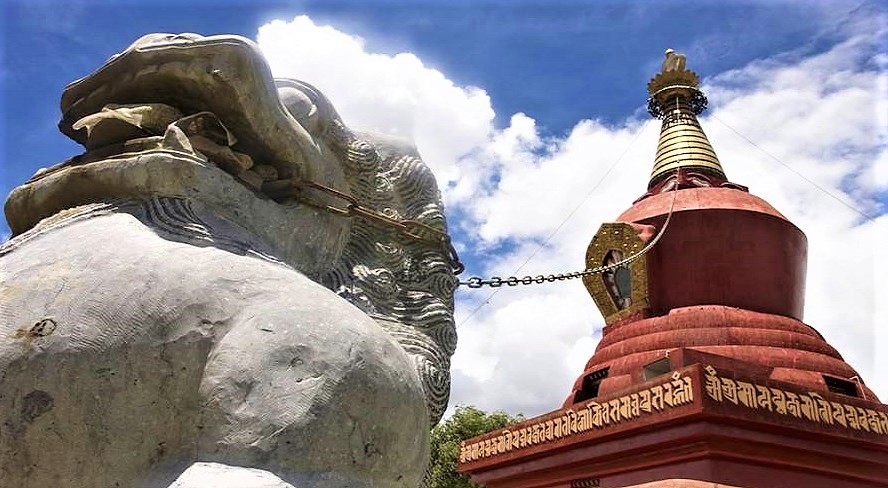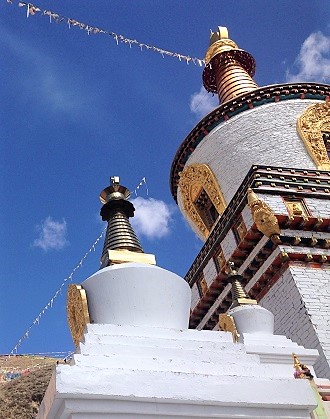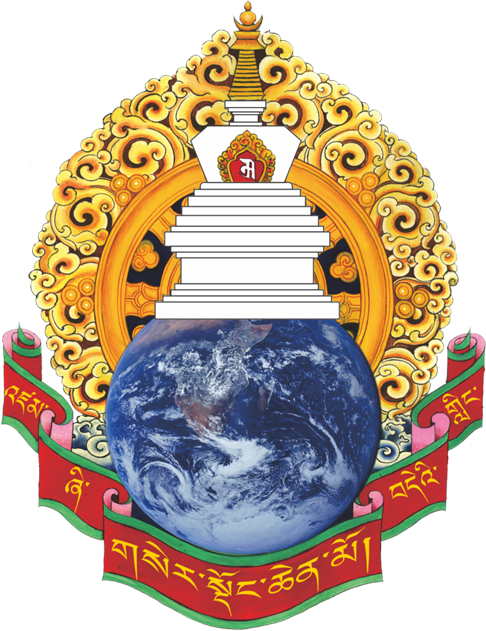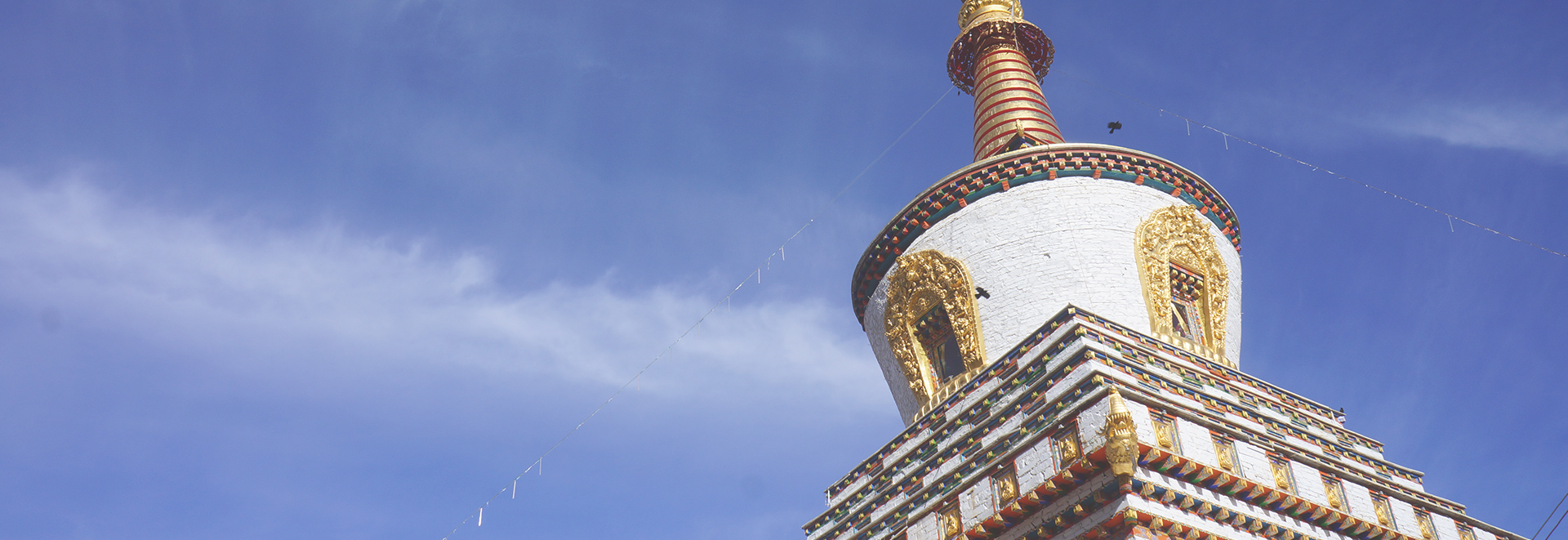In Tibet
HISTORY

When Tibet’s great Dharma King Lha Totori Nyentsen [5th cent.], who was an emanation of Bodhisattva Samantabhadra, was residing as a young man in Tibet’s first palace, Yumbu Lagang, he is said to have carved a three-tiered Royal Seal Stupa onto the door of the fifth chamber of his treasure store on the upper mountain range. When he turned sixty, he is said to have received a golden stupa, the Sutra of the Rituals of Renunciation and Fulfilment (spang skong phyag rgya), and other items, which either fell onto the palace roof or were given to him by the translator Thi-li-se, according to two versions of the story. Whatever the case, it was during that period that Buddhist stupas first appeared in Tibet, according to several historical sources.
During the reign of Dharma King Songtsan Gampo, the tradition of the holy Dharma was established on a vast scale. A white stupa was built on top of Lhasa’s Marpori, and a five-pronged stupa was built on the future site of the Tradruk Temple, the first of one hundred-eight border-taming and further-taming temples, in order to liberate a malicious naga with five serpentine heads. Southwest of the Naga Palace at Omatang Lake, next to the sandalwood runsang, the Keru Stupa was built, and inside the Rasa Trulnang Temple, the king built eight stupas with his own hands. These are but some of the many stupas that were built in Tibet [during this period].
During the reign of King Trisong Deutsen, when Guru Padmasambhava was first invited to Samye, five wondrous stone stupas were built. Four more stupas were built in the four directions around the temple of Samye, painted in different colors and variously adorned, such as the red stupa adorned with lotuses. One hundred and eight stupas, each containing a relic of the Buddha, were built on top of Iron Mountain, and the Great Master Padmasambhava used his staff to draw one hundred and eight stupas on the rocks of Samye Chimphu. These are some of the accounts that exist from that time, many of which are accompanied by photographs.
During the reign of Dharma King Tri Ralpachen, the Incomparable U-Shang Stone Temple of Flourishing Auspiciousness and Virtue was built, and a stupa was built there as a perfect first offering. After the deaths of the three great translators, Kawa Paltsek, Chokro Lu’i Gyaltsen, and Ma Rinchen Chok, reliquary stupas were built for them on Hepo Mountain. A reliquary stupa was also built for the Great Abbot Shantaraksita. These are some examples that illustrate the great number of stupas that were built during the early spread of the Buddhist teachings in Tibet, which are clearly mentioned in many authentic texts.
After the Buddha passed into parinirvana, Dharma King Ashoka used bronze from the east and west of India to build an enormous number of large and small Heaped Lotuses and Complete Victory stupas, many of which stood higher than the rooftops. He was then invited to Tibet, and later these stupas became known as Kadam Stupas. There are also many naturally formed, self-arisen stupas around Mount Kailash and other mountains and rocky areas.
Furthermore, there are numerous descriptions in the respective texts of the various philosophical schools, such as Sakya, Gelug, Kagyu, and Nyingma, as well as the sutras, tantras, and shastras, Kama and Terma, ancient and new translation traditions of stupas, both common and uncommon, but such elaborations exceed the confines of our present book.

At the center of the thousandfold constellation of buddhas of this Fortunate Aeon,
His compassionate aspiration shining like the bright-white full moon,
Supreme Teacher, Lord of Sages, in his gracious kindness,
Caused the thousand-petaled night-blooming water lily of the teachings to blossom in our world.
Although this Supreme Teacher has passed into peace,
Beings in the future have as the object of their merit and faith,
A vine of remembrance that embraces his wondrous, noble deeds:
The excellently shaped, beautifully designed stupa—how marvelous!


